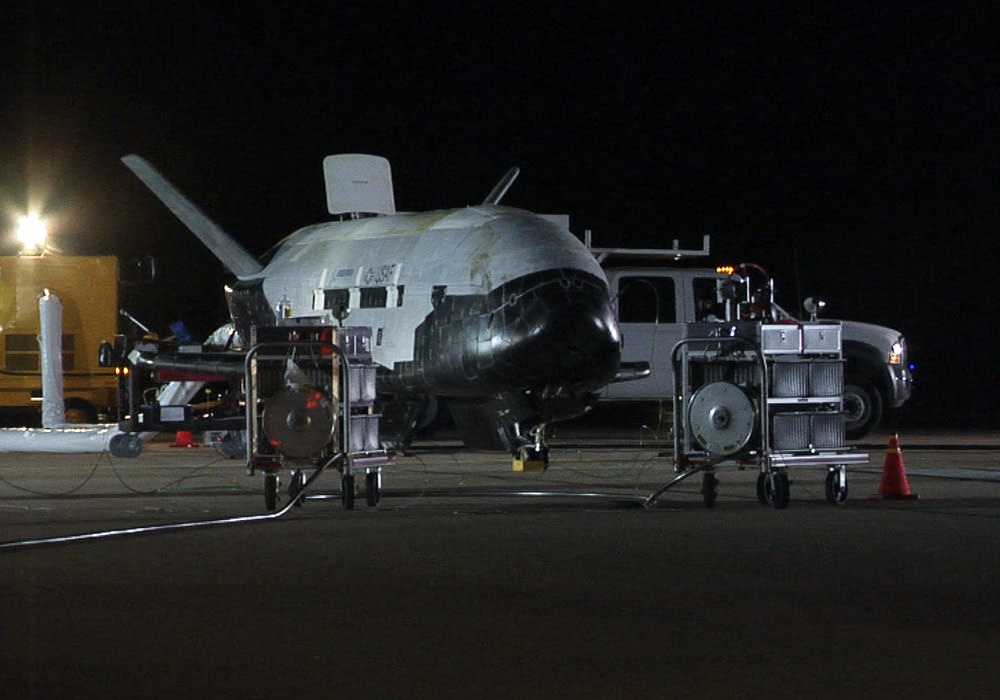[/caption]
After nearly 15 months on a secret mission, the Air Force's X-37B, an unmanned, reusable space plane, will soon be coming back home. A news release from the Vandenberg Air Force Base says the landing is expected to occur during the early- to mid-June timeframe, although the exact landing date and time will depend on technical and weather considerations. The mini space plane has been in orbit since March 5, 2011.
This is the second mission of the Orbital Test Vehicles to fly in the X-37B program with the second space plane, OTV-2. The first X-37B mission flew in 2010, spending 224 days in space. This original vehicle has been refurbished and is scheduled to go back into space for another mission sometime in October of this year.
As for the second space plane, its long mission has been termed a success, although no mission specifics have been released. It launched on March 5, 2011 from Cape Canaveral Air Force Station in Florida. Since then, the press release said, Vandenberg crews have conducted extensive, periodic training in preparation for landing.
"The men and women of Team Vandenberg are ready to execute safe landing operations anytime and at a moment's notice," said Col. Nina Armagno, 30th Space Wing commander. The space professionals from the 30th Space Wing will monitor the de-orbit and landing of the vehicle.
[caption id="attachment_89931" align="aligncenter" width="575" caption="Seen here is the X-37B Orbital Test Vehicle, compared with proposed X-37C crewed vehicle, the space shuttle and the Atlas V booster that is currently used to launch the OTV. Image Credit: AIAA/Grantz/Boeing"]
[/caption]
The mini spaceplane is 8.8 meters (29 feet) long with a wing span of 4.2 meters (14 feet). It can weigh up to about 5,000 kg (11,000 pounds) fueled for launch. The reported in-space design life is 270 days, but sources say that good performance on this mission enabled ground controllers to keep it aloft significantly longer.
While no news of its orbital parameters have been released, skywatchers and amateur satellite trackers have been keeping an eye on where the OTV-2 has been. After launch it had a 331 km (206-mile)orbit inclined 42.8 degrees to the equator, but in the summer of 2011 the orbit was raised slightly to 337 km (209 miles).
Vandenberg said they would provide more details when available.
Source:
Vandenberg AFB
 Universe Today
Universe Today
